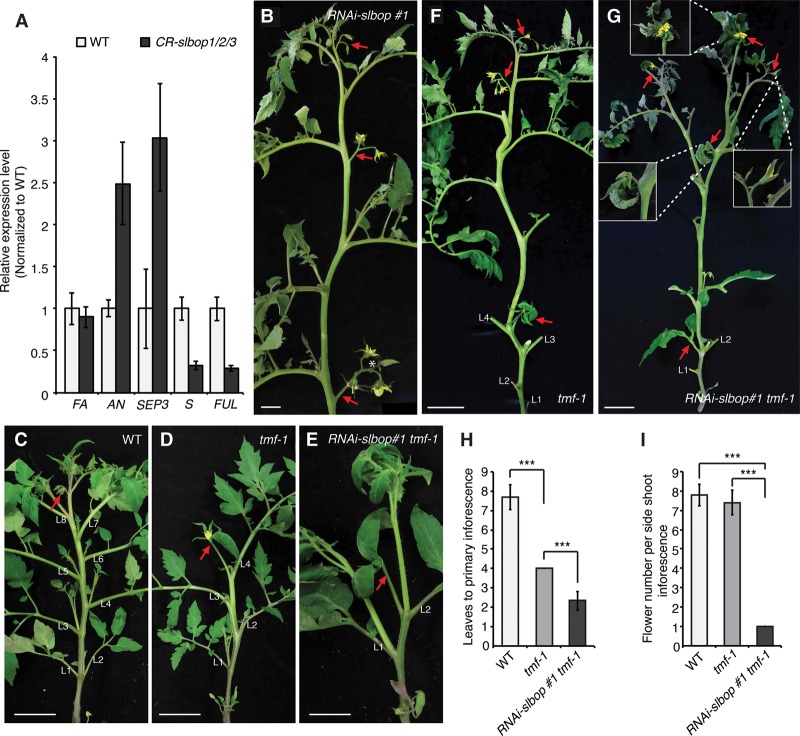Figure 6.
Loss of SlBOP activity enhances tmf mutant phenotypes. (A) Quantitative RT–PCR (qRT–PCR) on the TM stage of wild-type and CR-slbop1/2/3 primary shoots for the FM identity genes FA, AN, and SEP3 compared with the flowering transition gene S and a tomato homolog of Arabidopsis FRUITFUL (FUL). Values are the averages of two biological and six technical replicates. UBIQUITIN (UBI) served as an internal control, and values were normalized relative to wild type. (B) Representative main shoot from an RNAi-slbop plant showing two- or three-flowered inflorescences. (C–E) Representative primary shoots showing typical multiflowered primary inflorescence after eight leaves in wild type (C) compared with tmf-1, which flowers after four leaves and produces a single-flowered primary inflorescence with leaf-like sepals (D). (E) RNAi-slbop tmf-1 plants flower after only two leaves, and the sepals of the single-flowered primary inflorescence are even more leaf-like. (F,G) A whole-plant view of tmf-1 and RNAi-slbop tmf-1 plants showing that the typical multiflowered inflorescences from tmf-1 side shoots (F) are transformed into single flowers with leaf-like sepals in RNAi-slbop tmf-1 plants (G). (H,I) Quantification and comparison of flowering time (as measured by leaves to primary inflorescence) and flower number of the primary inflorescence from the indicated genotypes. (L) Leaf. Red arrows indicate inflorescences. Data are means (±SD). n = 6 in A; n = 15 in H and I. A two-tailed, two-sample Student's t-test was performed, and significant differences are represented by black asterisks. (***) P < 0.001. Bars: B, 2 cm; C–G, 5 cm.

